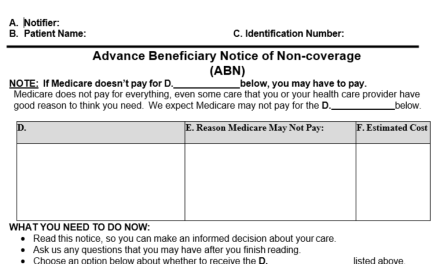
Professional Maturity

Cultural authority, societal respect, medical essentialness: We are behind on the growth chart.
The day I announced to my family that I wanted to divert from pre-medical studies into a career in chiropractic, I learned all about cultural authority and professional respect. The look of disappointment is one I’ll never forget. I wondered what my parents’ had encountered in their experiences to make them feel that way. Having 15 years of experience in this field, I know first hand where they were coming from.
My mother had been helped greatly by a blind chiropractor in Centralia as a teenage swimmer and diver. She has fond memories of how this man helped her. As an adult, my father had been treated by a Hillsboro chiropractor with great results and he referred several of his friends for chiropractic care. I myself first visited a chiropractor in Decatur as a teenager with my parents’ approval. I thought he was the smartest guy in the world.
So where did it all go wrong for them?
Perhaps they had seen some of the same cheesy yellow pages advertisements, run down offices, free give-away enticements and unsubstantiated claims that I have seen. Perhaps it was the chiropractic punch-lines at social gatherings, the disapproving growl from their MD when chiropractic was mentioned or the propaganda from the medical establishment to boycott chiropractic. Whatever it was, the negative impact was made. Right or wrong, to my family at that time, chiropractic did not measure up to the rest of the medical establishment. To them, I wasn’t going to be a “real” doctor.
Against enormous odds and obstacles, the chiropractic profession has advanced admirably into mainstream American fiber. To our individual patients, each DC stands out as a hero, life-saver and friend in need. We are the ones who saved the day so the bride’s father could walk (upright) his daughter down the aisle. We got the breadwinner back to work in two days as opposed to two weeks when the mortgage was late. We stopped the headaches that made mom miserable and withdrawn. However, collectively, we often take one step forward and two steps back. To the non-discriminating public, we as chiropractors are stereotyped by our lowest common denominator. Professionally, we endure daily discrimination from insurance companies, government programs, allopathic organizations and ourselves.
I think much of it goes back to the stereotyping issue. Perhaps it’s even a mixer/straight issue to a certain degree. To the unknowing public, chiropractors are chiropractors. We are all the same. We know differently but the public doesn’t. We are all linked to the DC across town who advertises that he/she does not diagnose but only corrects subluxations. We are all linked to the DC who has free dinner meetings designed to book patients with an initial enticement of free or reduced fees. We are all linked to the DC who convinces his unknowing patients into 100 visit treatment plans. Since we as a profession have essentially failed to police ourselves of the nonsense, other entities have done it for us through limited access or denied access to all of chiropractic. Limited insurance benefits for chiropractic services are commonplace. Chiropractors are excluded from most hospital staffs. Chiropractors are not recognized to perform IHSA physicals. Harassment from claims adjusters, lawyers, and personnel directors is all too frequent. As I see it, the reason for most of this is our lack of cultural authority, professional maturity and established medical necessity.
To advance our position with the public, physicians, insurance companies and other entities that have an effect on our operations, things have to change. Our image needs an extreme makeover.
It’s time for the next stage of professional maturity.
I’ve outlined below a rough draft of working points for chiropractic acceptance and advancement.
- Our chiropractic specialists (DABCO, DABCI, DACBR, DABCSP, etc…) should be recognized as such. Allopathic physicians are recognized by their residency or fellowship training (pediatrician, internist, neurologist, cardiologist, etc…). Intraprofessional consultations and second opinions are commonplace in allopathic medicine, but very uncommon in chiropractic. More DCs need to be enrolled in the various diplomate programs for clinical skill enhancement and as a means of differentiation from colleagues through specialization. How much better would our profession be if all practicing DCs were trained up to the diplomate level? It is a shame that practice management seminars have far greater attendance than educational seminars. That fact alone stands as witness to where the collective chiropractic focus exists.
- Expanding our scope of practice needs to be strongly considered. If it takes professional tiering to accomplish this, it is time for the discussions to earnestly begin to hammer out the dynamics for this to occur. Five years ago, I felt professional tiering was a bad idea. Today, it seems much more necessary. Each DC can decide for himself/herself if an expanded scope would be a good fit. Practicing “medicine in all its branches” (IMPA language) would limit many of the discriminatory practices we face routinely. I know this concept is very controversial among DCs. There are good points to consider on both sides of the debate. A few decades ago, osteopaths expanded its scope and are now very mainstream. To a large degree, we are still on the outside looking in when it comes to health care systems.
- Individually, each DC needs to actively communicate and engage in professional relationships with their local medical professionals. Patient care dialogue, exchange of areas of special interest and reciprocal educational opportunities are encouraged. At the very least, the patient’s allopathic PCP should receive a copy of the initial dictated report from the treating DC. Setting up office lunch meetings, forwarding journal articles of interest, and occasional follow-up phone calls regarding patient progress are all professional ways to become a team player. Medical specialists all communicate back to the primary care physician and we should be no different. It is to the extent that PCPs know and trust us that they will seek to utilize chiropractic for their patients.
- Our leaders must assess our situation and act courageously to protect our profession. The chiropractic leaders of past generations acted with stiff resolve and we in Illinois should all be grateful and respectful of our current scope of practice as it compares to most other states. However, there is no denying that the healthcare arena has drastically changed. If we do nothing and let others dictate our place, our place will be reduced. To borrow a cliché, if we fail to plan, we plan to fail. I admire the physical therapy lobby that has an active vision plan and operates methodically to advance their position. It seems all too often we simply react to situations and are not actively advancing an agenda.
It is to the extent that PCPs know and trust us that they will seek to utilize chiropractic for their patients.
The Challenge
My purpose in writing this article was to challenge each DC to consider where our profession will be in 10, 20, 30 years. Will chiropractic be a good career choice for our grandchildren? Will the next generation of prospective chiropractic students receive the same look of disappointment I received or a hero’s welcome? We need to actively discuss our strategy for professional protection and advancement and put the plan in action…… sooner than later.


















